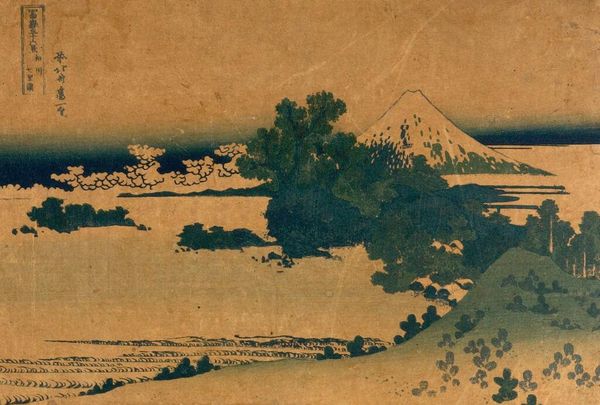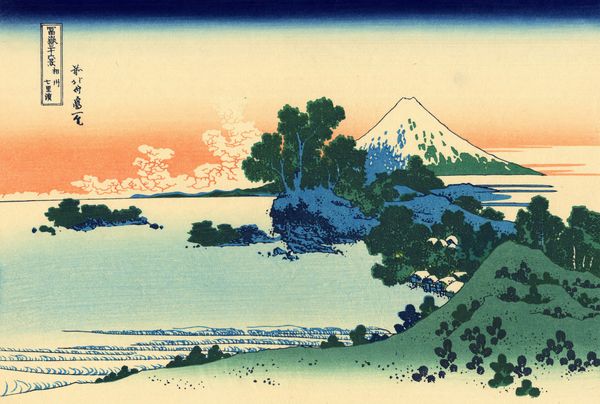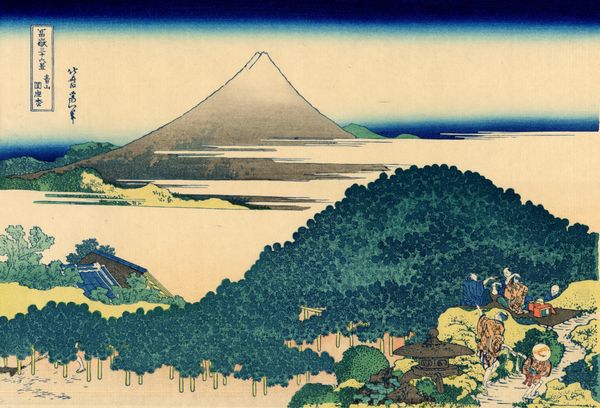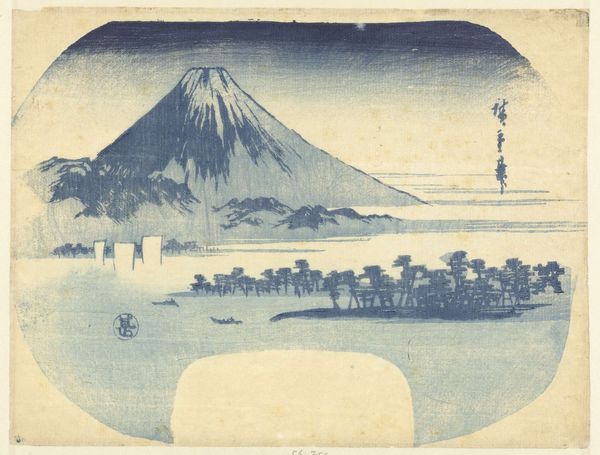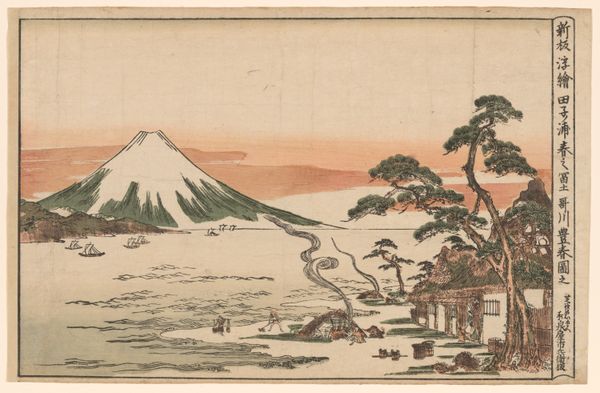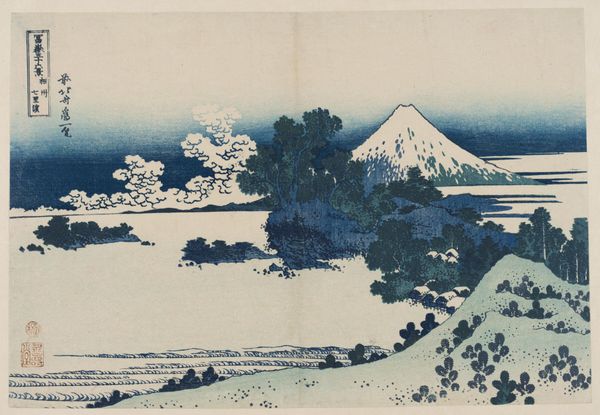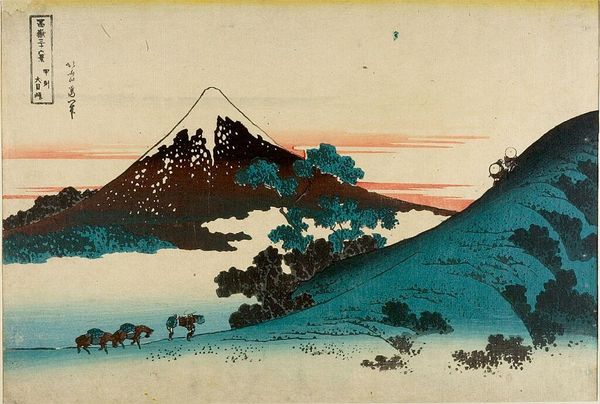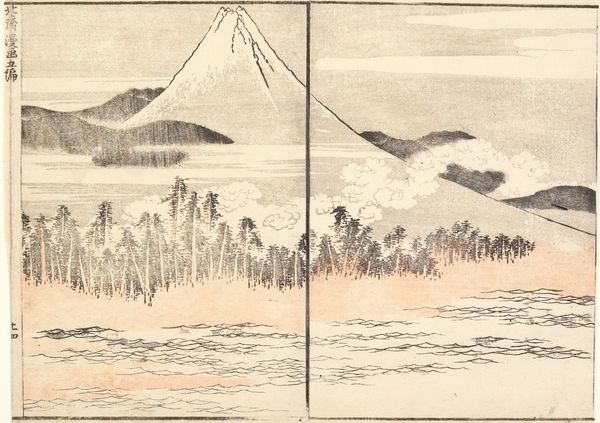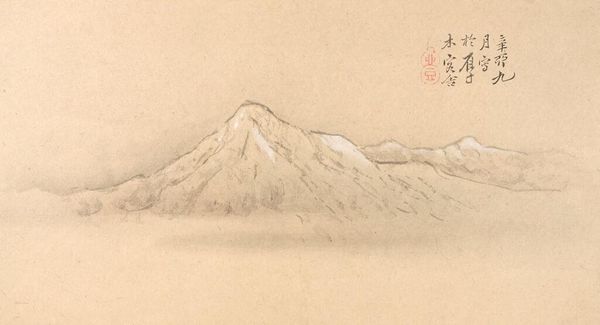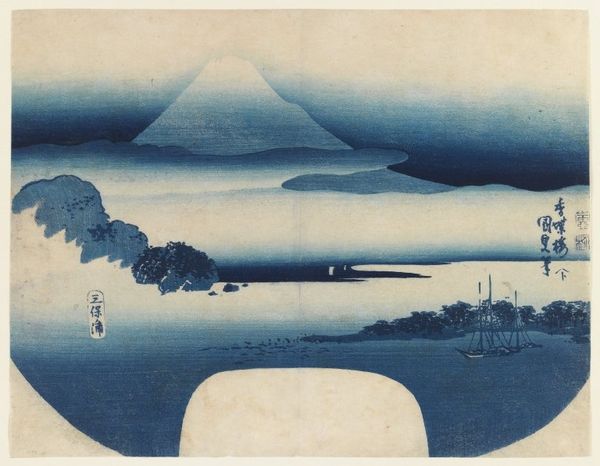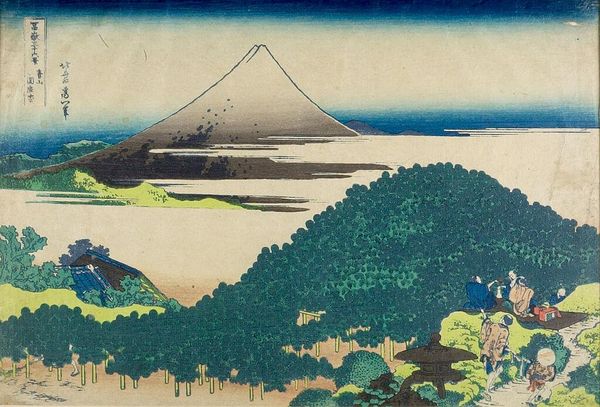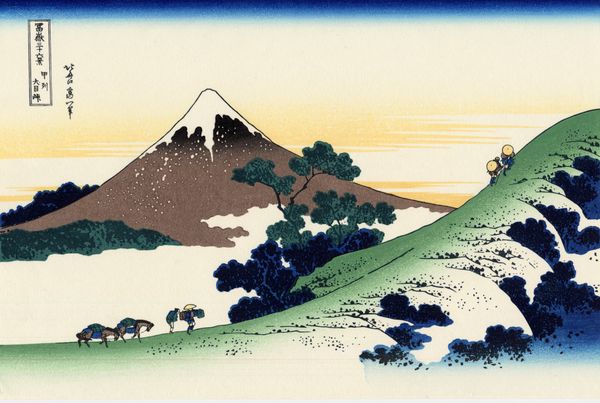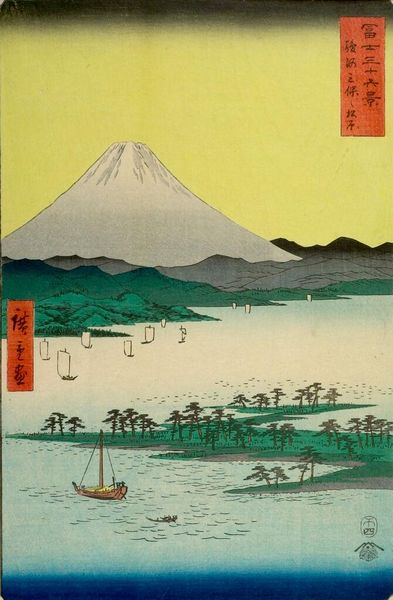
Mount Fuji and the Pines at Miho c. 19th century
0:00
0:00
Dimensions: 20 3/4 × 33 1/16 in. (52.71 × 83.98 cm) (image)70 1/8 × 40 3/4 in. (178.12 × 103.51 cm) (with roller)
Copyright: Public Domain
“Mount Fuji and the Pines at Miho” was created by Suzuki Kiitsu in the nineteenth century, a period of immense social and cultural transformation in Japan. Kiitsu was associated with the Rinpa school, known for its decorative and stylized naturalism, yet he also innovated within its traditions. Mount Fuji, depicted here, is not just a mountain, but a symbol deeply embedded in Japanese identity, spirituality, and art. For centuries, it has been a sacred site, a source of artistic inspiration, and a national icon. The “pines at Miho” also carry cultural weight, representing longevity and steadfastness. Kiitsu’s painting invites us to meditate on the interrelationship between nature, culture, and identity. The serene and ethereal quality of the painting evokes a sense of tranquility, and perhaps even nostalgia for an idealized past. This piece offers a space to reflect on our relationship with the natural world and the symbols that shape our understanding of ourselves and our place within the larger cultural landscape.
Comments
minneapolisinstituteofart almost 2 years ago
⋮
This muted depiction, a departure from Kiitsu’s usual bright and bold painting style, shows Mount Fuji from the shore of Miho-no-matsubara, a pine-covered peninsula that stretches into Suruga Bay and is itself a famous locale. Though the area has inspired many literary and theatrical works, the painting does not seem to allude to any, and may have been sketched from life as the crest of Mount Fuji bears five peaks rather than the traditional three of many renditions.
Join the conversation
Join millions of artists and users on Artera today and experience the ultimate creative platform.
